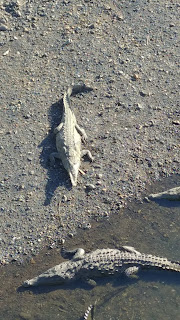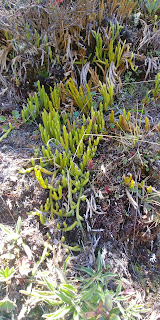Last Day

Our last day in Costa Rica was spent travelling back to the airport hotel we stayed in the first night. The trip back to San Jose was really fun! We stopped at Playa Dominical, I think thats the name of the beach. It was an interesting area. They had restaurants and hotels all along the street by the ocean. At the edge of the streets were booths of people selling souvenirs, clothes, jewelry, and other items. The beach was very rocky and the water was rough, but still beautiful. Next we stopped at a bridge where crocodiles hang out under. I have never seen a crocodile outside of a zoo, and I was so impressed by their size! They were massive! We also stopped at a souvenir shop and there were some almond trees that had scarlet macaws eating from them. The colors were so bright and gorgeous on these birds! To end the day we had one final dinner together and prepared for our trip home. Scott and Jessica did an amazing job with this trip. I made many friends and had rare experiences that I

